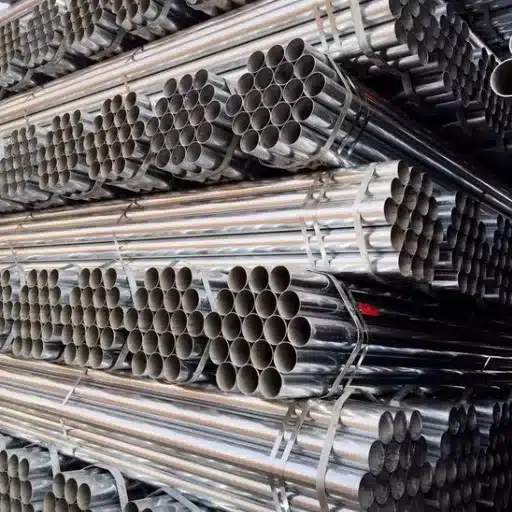Blind spots and complexities abound in welding stainless steel, but the process can be gratifying. It’s a common assumption that stainless steel is impossible to weld; however, it can be done, but with the right tools, techniques, and knowledge. This article attempts to unravel the nuances of welding stainless steel, including its myths, challenges, and the solutions to master this exotic material. This guide will help beginner welders and those more seasoned polish their understanding of stainless steel welding.
What Makes Weld Stainless Steel Different from Other Metals?
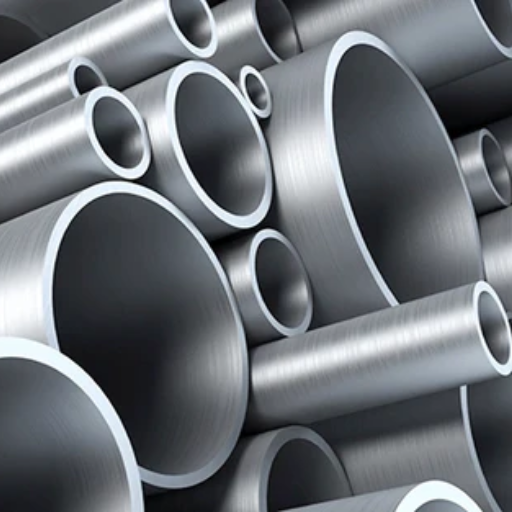
What makes stainless steel stand out among other metals is the combination of its composition and its properties. For instance, stainless steel contains chromium, which gives it oxidation resistance due to the protective oxide layer. Compared to some metals, stainless steel has a higher thermal conductivity and a higher coefficient of expansion, which increases the chances of warping or distortion when welding is done. The strength combined with lower thermal conductivity often leads to the need for special welding techniques along with specialized filler materials to guarantee thorough penetration and a strong weld joint. Because of all these attributes, precise and detailed attention is required for welding stainless steel.
Understanding the Properties of Stainless Steels
I firmly believe that learning about the properties of stainless steels is crucial in making the right material selection for any application. For instance, the outstanding corrosion resistance of stainless steel makes it essential in the construction, food processing, and healthcare industries, which require strength, hygiene, and durability. However, just like everything else, stainless steel has its own difficulties, in this case, welding. It is strong, has great thermal conductivity, and is prone to distortion, all of which must be skillfully and precisely managed. With the use of proper filler metals and advanced techniques, I have, on many occasions, guaranteed the production of strong, reliable weld joints. The combination of these nuanced features is at once an art and science, enabling the delivery of quality results in the harshest of environments.
The Role of Corrosion Resistance in Welding
As with any type of welding, stainless steel and other corrosion resistant steel alloys tend to require the utmost care while welding. Proper material selection ensures long term performance and durability as well as strength. The applied weld technique and selected filler metal also dictate the sensitivity to pitting and stress corrosion, thus their selection has significant influence on the durability of the welded construct.
The Impact of the Type of Stainless Steel on Welding Techniques
The particular grade of stainless steel makes a huge difference in the welding processes and results. Austenitic stainless steels, which are easy to weld and resist corrosion, require precise attention to heat input so that warping or excessive grain growth does not happen. Ferritic stainless steels are less likely to crack, however, they require intricate preheating and slow cooling to avoid failures due to stress. As a combination of austenitic and ferritic structures, duplex stainless steels need very strict control of temperature if their special mechanical properties are to be retained. In addition, the integrity and performance of post-weld treatment alongside the right filler material selection are of utmost importance to structural integrity. Knowing all those details, we can execute welds that are strong, long-lasting, and tailored for many different industrial needs.
What Are the Challenges of Welding Stainless Steel?
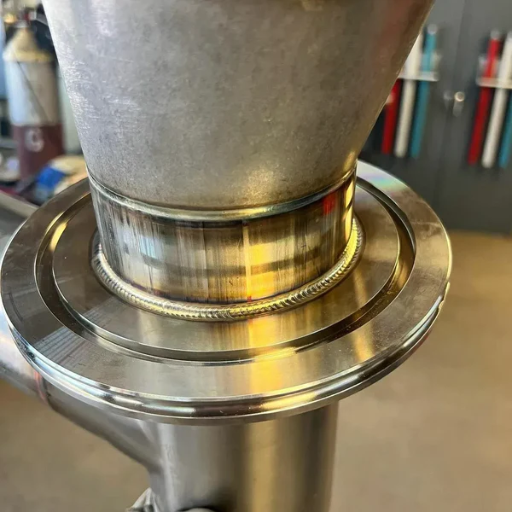
Thermal distortion, oxidation, and the retention of corrosion resistance create challenges in welding stainless steel. Its low thermal conductivity results in localized overheating, which leads to warping or distortion. Moreover, inadequate shielding results in oxidation, which reduces the surface quality of the material. In order to effectively resolve these challenges and to obtain strong and durable welds, proper filler material, temperature control, and gas shielding must be ensured.
The Difficulty of Managing the Weld Pool
I understand that managing the weld pool is difficult. Numerous weld pool issues I have faced are caused by several primary factors, and all of them need to be supervised and controlled to maintain the standard of the welds. This is how I do it:
- Control of Heat Input: Excessive heat is an unwelcome variable while controlling heat input. Excessive heat within a weld pool tends to make it unstable, and excessive pooling can occur, along with material burning. Conversely, a lack of heat can make the fusion poor. To manage these fixed issues, I always determine heat input by modifying the amperage, voltage, and travel speed according to the specs of the material and the shape of the joint.
- Gas Shielding: Selection of the proper shielding gas is intended to prevent oxidation in the weld pool. As an example, while performing stainless steel welding, I normally utilize an argon mixture with minor percentages of oxygen or CO2 so that the arc remains stable and optimal pool dynamics are achieved. A set gas flow rate prevents contamination,n and thus a clean weld is achieved.
- Manipulation of the Welding Torch: The torch movement has a considerable influence on the weld pool. Consistent angle (usually about 15 degrees) along with controlled movements are required to facilitate uniform bead formation while minimizing porosity. Besides, I also change my torch movement for differnt positions of welding e.g. vertical or overhead welding.
- Material Thickness and Preparation: More heat is needed to weld thicker materials compared to thinner ones, which need more control to prevent warping. I always clean surfaces and match filler metals to base materials to control variability in the weld pool.
The weld pool is within my ability to control and monitor. It all revolves around comprehending how the fundamental parameters within the process interact with each other, as well as how to control them when issues arise during welding.
How the Welding Process Affects Stainless Steel Integrity
The procedure of overbalancing can profoundly affect the structural coherence of stainless steel by changing its microstructure as well as other characteristics that are found in the heat–affected zone (HAZ). A high heat input might induce carbide precipitation, which can be unfavorable with regard to the material’s ability to resist corrosion. On the other hand, rapid cooling can cause brittleness or greater concentration of stress. To balance the strength, durability, and resistance to corrosion of the material, it is necessary to select suitable welding parameters with low heat input and post-weld treatments such as passivation.
The Complications of Welding Stainless Steel Require Expertise
I can assure you that welding stainless steel requires significant knowledge and mastery of the material, aside from the welding process. The greatest challenge that arises is managing the heating—too much input can negatively affect the material due to carbide precipitation, while too little can result in poor fusion or even stress concentrations. And, in my experience, the combination of TIG or laser welding with good control of parameters, including heat, in advanced techniques results in better outcomes. Among other practices, passivation is critical for the restoration and enhancement of corrosion resistance and durability following stainless steel welds. Careful attention to detail and experience are essential in these processes to guarantee quality results.
Which Type of Welding is Best for Stainless Steel?
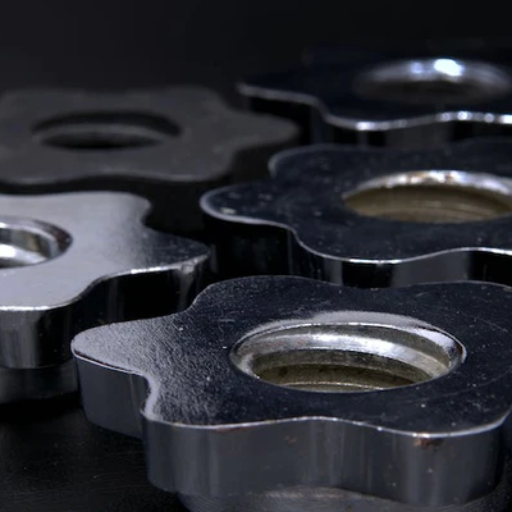
When it comes to welding stainless steel, the optimal welding technique truly varies with the project scope and the particular grade of stainless steel being used. However, in my professional experience, TIG (Tungsten Inert Gas) welding is usually the preferred option due to its accuracy and the ability to provide clean and quality welds. This is the rationale:
- Precision and Control: The techniques employed in TIG welding provide masterful regulation of the heat input and filler material used, which TIG welding ideal for delicate stainless steel sheets or components requiring delicate craftsmanship. This also reduces possible distortion or burn-through, which is very important for stainless steel.
- Clean Welds: TIG welding produces smooth and corrosion-resistant welds as a result of argon or a mixture of argon and helium shielding the weld pool from oxidation. This is especially beneficial for stainless steel as it relies on its chromium oxide layer for anti-corrosive properties.
- Flexibility with Filler Material: Ability to select different filler materials to match the base metal is a strong feature of TIG welding and ensures the weld joint is compatible and strong. This greatly helps in preserving the stainless steel original properties.
With that stated, other welding techniques may also be appropriate as per the situation:
- MIG Welding: In cases where speed is prioritized, such as with thick stainless steel or large scale projects, MIG welding sparsely, but it is an option. Achieving a good finish requires proper shielding gas like a mix of argon and CO2.
- Laser Welding: For specialized tasks requiring high precision and low heat input, laser welding is another superb alternative. While it needs a set of specialized tools, it greatly minimizes thermal distortion and produces exceptionally clean joints.
- Stick Welding (Shielded Metal Arc Welding): Stick welding is not very common with stainless steel, but it is a good choice for outdoor or remote locations where portability is necessary. It does require careful selection of electrodes to get good results with stainless steel.
In the end, the “best” type of welding will depend on many criteria, for example:
- Material Thickness: When working with a thin stainless steel section, TIG welding is preferred. MIG or stick welding would likely be more effective on thicker sections.
- Project Requirements: To maintain aesthetics, TIG is great.With respect to corrosion-sensitive areas, MIG may be more useful for high quantity or structural work.
- Equipment and Budget: The Project scope will define which method will be handy. Sophisticated equipment is a necessity for TIG and laser welding processes, which can determine the budget.
Regardless of the approach you opt for, adequate preparation, such as surface cleaning and settings selection, is critical for proper welding.
Exploring TIG Welding for Precision
Gas Tungsten Arc Welding (GTAW), otherwise called TIG welding, is suitable for jobs that need accurate, clean welds and bold results. Welding steel to iron and aluminum is a must for the aerospace, automotive, and fine and intricate metal works industries. Processes requiring more skills take longer, but in the end, the quality of the work and the beauty of the finish are why it is the best form of welding for detailed and crucial work.
The Advantages of MIG Welding Stainless Steel
Among the various forms of welding, MIG welding offers tremendous efficiency and flexibility, especially when working with stainless steel. Its straightforward application is highly favored in many projects because it creates strong and uniform welds. When compared to TIG welding, MIG welding can be executed at a considerably higher rate, which will increase productivity on bigger projects. Moreover, it is widely used because it is more forgiving to non-expert users, making it great for both seasoned craftsmen and novices alike. All things considered, its speed, convenience, and dependability make it one of my most frequently used methods for welding stainless steel.
The Role of Stick Welding in Stainless Steel Fabrication
The activity is essential for stainless steel fabrication because of the versatility that the process lends. Stick welding or Shielded Metal Arc Welding (SMAW) possesses a high degree of flexibility, which enhances its functionality in remote locations and outdoors. As the procedure is less affected by environmental factors like wind, it provides good results in stubborn locations. Moreover, stick welding is especially beneficial for repair work or structural work where rapid setup and mobility are a priority. While it may not be the cleanest approach when compared to other options, its strength and reliability for working on varying thicknesses of stainless steel make it an essential tool in stainless steel fabrication.
How to Prepare to Weld Stainless Steel Effectively?
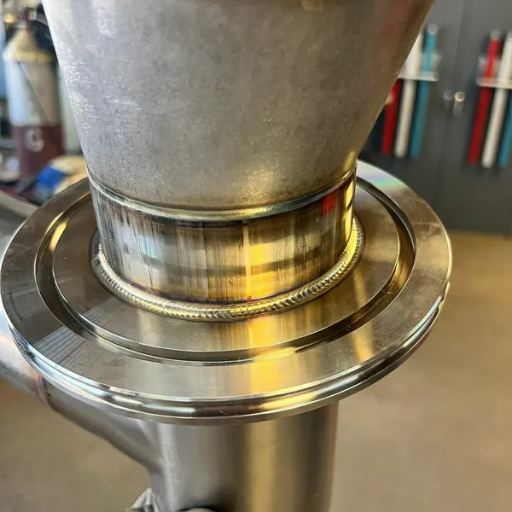
The first step for me in prepping for stainless steel welding is making sure the workspace is free of any harmful contaminants. Because stainless steel is very reactive, it is very important to get rid of any impurities by cleaning the surface using a degreaser or any other cleaner specifically designed for stainless steel. Following these steps, I choose the appropriate filler material and welding procedure that complies with the material grade and specific requirements of the project. In most cases, my preferred option is TIG welding as it provides the best level of quality and cleanliness for the work. Finally, I check the tools and confirm that the values of current and gas flow rate are set to the desired levels. Adjusting tools is only part of the preparation process; I also use personal protective equipment and ensure that ventilation is sufficient for the entire operation. These measures greatly help in enhancing the quality of the welds to make them as clean and strong as possible.
The Importance of Choosing the Right Welding Method
Choosing the correct welding technique is important due to its influence on the level of quality, strength, and safety of the final product. Specifics like material kind, thickness, project requirements, and finish expectations greatly help in making decisions. TIG welding, for example, excels on thin materials when precision and cleanliness is needed, while MIG welding is more efficient and versatile on thicker and bigger projects. Evaluation of these issues assists in achieving the best outcome.
Steps for Preparing Stainless Steel You’re Working With
With stainless steel, my first order of business prior to welding or fabrication is to prep the surface area. In this case, I ensure that dirt, oil, or residue is removed using an appropriate degreaser or cleaner. Following this step, I will focus on the edges. If they were ground or cut, they may be sharp and/or uneven. All of these factors, if left uncorrected, can affect the weld. For this step, I use abrasives made specifically for stainless steel so that there is no contamination during the process. Moreover, I ensure all tools and areas that do not need to be worked on are void of carbon steel particles, as these will rust the stainless steel over time. If done correctly, these measures will ensure smooth and precise outcomes while keeping the structural integrity of the material.
Selecting the Proper Stainless Steel Filler Material
When selecting a stainless steel filler, the type of base metal that will be welded together and the resulting properties of the weld always matter. For example, when working with austenitic stainless steels, 308L, 309L, or 316L can be used, depending on the grade and application of the base material. A thorough examination of corrosion resistance, strength, and durability must be factored in when choosing a filler material. Ensure that these factors are cross-checked with the composition of stainless steel. The manufacturer’s instructions and welding codes should be reviewed for making the filler selection.
Can You Weld Stainless to Mild Steel Successfully?
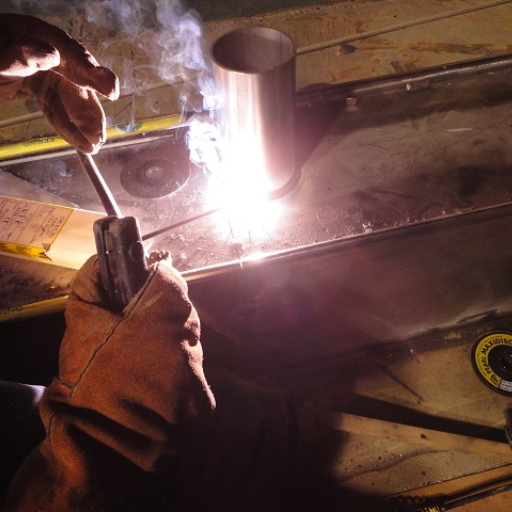
Absolutely, welding stainless steel to mild steel is possible, however, it needs thorough attention to detail in the methodology and selection of consumables. In my experience, the most crucial consideration is the choice of compatible filler material, and usually, an austenitic stainless steel filler such as 309L does the job beautifully. Furthermore, managing the heat input during a welding cycle is crucial to minimize the possibility of distortion or cracking due to the thermal expansion and conductivity differential of the two components. Surface preparation, like surface cleaning and joint alignment, is critical to achieve sound welds.
Understanding the Differences Between Stainless and Mild Steel
Both the composition, properties, and applications of stainless steel and mild steel are different from each other. The presence of chromium in stainless steel gives it corrosion resistance, enabling it to withstand moisture as well as chemical exposure. It is stronger and looks better than mild steel. Mild steel is mostly iron and carbon, it is easier to weld and cheaper, which makes it more suitable for lower-strength structural applications where corrosion resistance is not that important. A decision can be made on which steel to use after an analysis of the project scope and objectives, considering the environmental conditions and economics.
The Use of Stainless Steel Wire in Mixed Metal Welding
In every scenario of mixed metal welding, I find it ideal to work with stainless steel wire because of its unmatched functionality. Stainless steel wire guarantees support against corrosion and possesses strength from other metals, which is ideal when dealing with metals being worked in harsh or varying conditions. Also, its weldability assists in obtaining clean and consistent results even when cupping dissimilar materials such as stainless steel and mild steel. In my personal experience, anything from the filler wire options has a direct impact on the durability and integrity of the weld, and in most cases, stainless steel wire has proven to be the most reliable when long-term performance is the main concern.
Overcoming Challenges in Weld Joint Integrity
Checking that welds are intact usually boils down to the right prep work, materials, and technique. First, make sure surfaces are hand cleaned from elements such as oils and rust, since that would weaken the weld. Make sure to use proper filler materials that can easily bond with the base metals so you don’t have to deal with cracking or corrosion. Finally, use the right welding protocol and use the right parameters like heat input and travel speed to ensure a good, strong joint. Performing routine checks and working aligned with the industry are very important when it comes to long-term weld sustainability.
Reference
- Why Welding Stainless Steel Is Difficult? – Discusses challenges like poor thermal conductivity and distortion during cooling.
- Why Can’t YOU Weld Stainless Steel? A video by ESAB explaining difficulties with different grades of stainless steel.
- Stainless Steel Welding – Challenges, Methods & Best Practices – Covers issues like low thermal conductivity, high thermal expansion, and heat input.
Frequently Asked Questions (FAQs)
Q: Why is welding of stainless steel considered difficult?
A: Welding of stainless steel is challenging because it has a tendency to warp and distort under heat due to its low thermal conductivity. Additionally, stainless steel isn’t as forgiving as carbon steel, requiring precise control over the welding process to avoid defects.
Q: What makes stainless steel so different from mild steel when welding?
A: Stainless steel comes with a higher chromium content compared to mild steel, which makes stainless steel more resistant to corrosion. This difference in composition affects the weld puddle and requires specific techniques to achieve a strong weld.
Q: Can a MIG welding machine be used for stainless steel?
A: Yes, a MIG welding machine can be used to weld stainless steel. However, it requires the use of specialized shielding gases and filler materials to ensure proper weld quality and corrosion resistance.
Q: What is the best welding method for stainless steel?
A: TIG welding is often considered the best welding method for stainless steel due to its precision and control. It allows the welder to produce clean, high-quality welds with minimal heat distortion.
Q: Are there specific types of stainless steel that are more difficult to weld?
A: Yes, certain types of stainless steel, particularly those with high carbon content, can be more difficult to weld. These types of stainless steel may require preheating or specific welding techniques to prevent cracking.
Q: How does the welding of stainless steel differ from welding carbon steel?
A: The welding of stainless steel requires more attention to heat control and material preparation than welding carbon steel. Stainless steel isn’t as forgiving, and improper techniques can lead to warping, cracking, or corrosion issues in the weld.
Q: What role does the welding machine play in welding stainless steel?
A: The welding machine plays a crucial role in providing consistent and controlled heat input, which is essential for achieving a quality weld on stainless steel. It is important to select a machine that is capable of the specific welding process you plan to use, such as TIG or MIG.
Q: Why is it important to understand the specific stainless alloy you’re working with?
A: Different stainless alloys have varying properties, such as corrosion resistance, thermal expansion, and electrical conductivity. Understanding the specific stainless alloy you’re working with helps in selecting the appropriate welding process, filler material, and technique to ensure a successful weld.
Q: What are some common issues faced when welding thin stainless steel?
A: Welding thin stainless steel can be challenging due to its propensity to warp and burn through with excess heat. Controlling the heat input and using techniques like stitch welding can help mitigate these issues.
Q: Is there an alternative option for welding stainless steel other than MIG and TIG?
A: Gas metal arc welding (GMAW) and flux-cored arc welding (FCAW) are alternative methods that can be used for welding stainless steel. Each method has its own advantages and is selected based on the specific requirements of the project.






